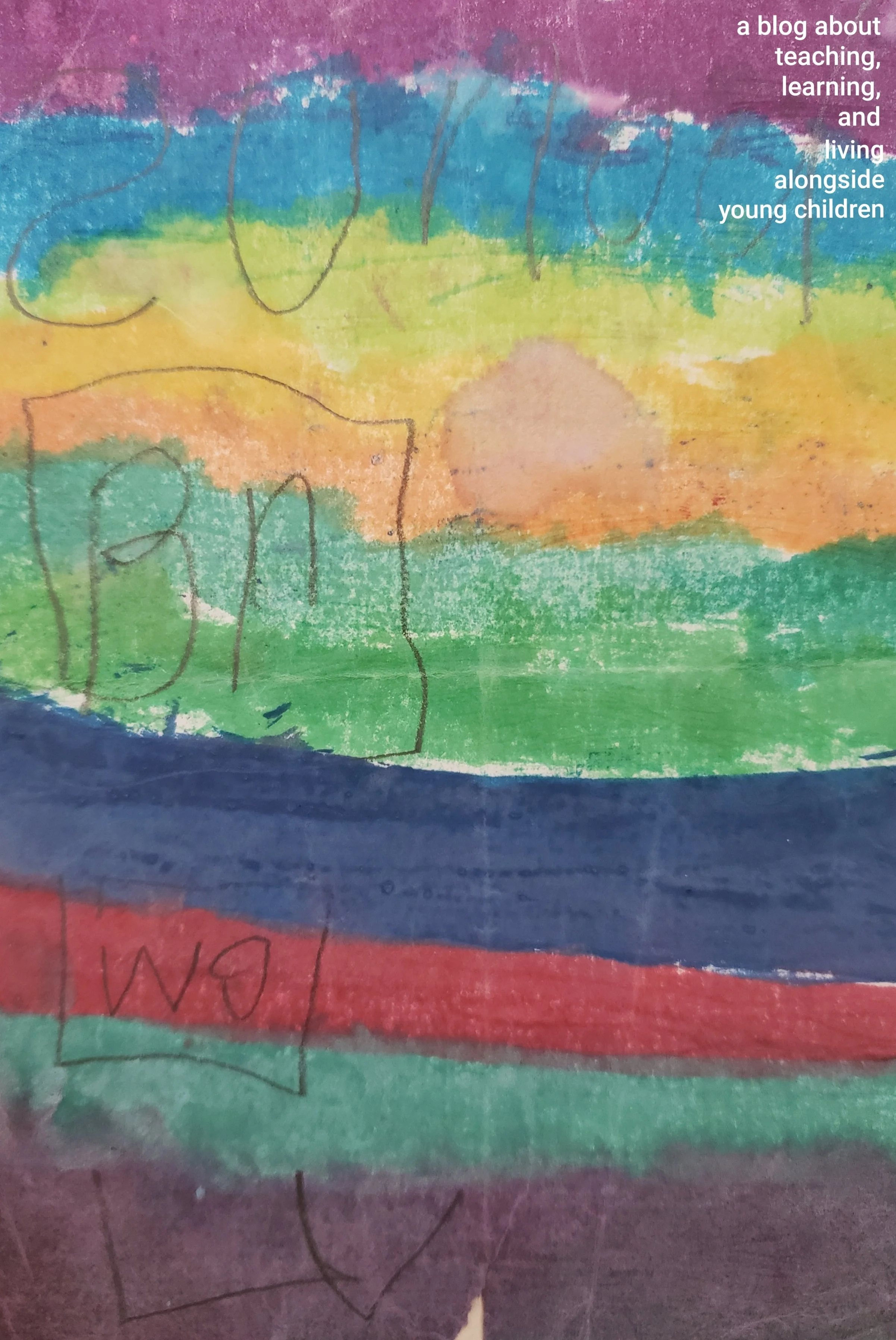Practice, Not Magic: Cleaning Up (Part Two)
/Illustrated by Beatrix, Age 6
Practice, Not Magic is a series of posts about the practical aspects of living alongside young children. Focusing on one vignette, we can parse out the developmental from the situational and how to think through common dilemmas faced by parents, teachers, cool aunts, and chosen family, et al. The principles below can be adapted for either home or the classroom, but are a guide for thinking, not a prescription.
Part 1 of this post on supporting children to clean up after themselves focused on logistics that can inhibit cleaning up. That post can be found here.
As I mentioned in Part One, children’s resistance to cleaning up can be about different things depending on age and circumstances. Here we will consider another possible problem and reflective solution.
Issue to work through: Child has a hard time stopping play and cleaning up when it’s time to transition to the next part of the day
Potential cause of behavior: The child(ren) is not ready to let go of their idea
Young children live in the here and now, meaning their sense of permanence or continuity is in flux. To a child under the age of about 6, stopping mid-game really can feel like it’s the end of that play experience forever. Our goal as the adult, beyond just getting the space cleaned up and facilitating a transition, is to support the child to move from a mental place of scarcity (“I must do this now because I will never have what I want again”) to one of trust (“I know my ideas and my things are safe in my family/classroom and will be available again”). Put some special emphasis on the importance of children’s ideas here. In order to create healthy expectations for children, we must see their play as inherently valuable. Children learn much from their play, including a sense of identity fueled by the use of creativity, cognitive skills, and experimentation, so it makes sense that stopping in the middle of play can be extremely challenging. This is not to say we can live life according to the child’s internal clock. On the contrary, children need us to provide the logistical and emotional information to be successful each day. By thinking through the dilemma and reassuring the child that we can “hold the idea,” we support them to develop self-regulation and gain a wider sense of perspective about themselves and the world.
Possible Solution: Start by using clear, calm communication to say what is happening and why. Acknowledge the child’s feelings and give the reassurance that we can return to the game or idea at a different time. There’s no need to promise specifics if you can’t realistically keep to them. There is also no need to distract a child from their feelings (i.e. “you have crayons at home”). Sitting with and moving through emotions will better serve the child in the long run. The crayons will, indeed, be at home, but the goal here is not to fill the void with other things but with the assurance that we will get through this together. Then, demonstrate that you are reliable by remembering the plan the next time it’s feasible.
What this solution might sound like:
Micah: It’s time to clean up and get ready for lunch.
Four-year-old: (continues playing, ignoring Micah)
Micah: (calmly walks over) It’s time to clean up and get ready for lunch.
Four-year-old, yelling: No! I don’t want lunch! (continues play)
Micah: (puts a gentle hand on the toy being used) We are heading to lunch, and we have to get this space ready for the next person. You are upset. Are you wanting to save this idea?
Four-year-old: Yes.
Micah: What is the idea?
Four-year-old: Making a birthday cake.
Micah: Okay, so we will remember in our minds that you are using the yellow bucket and red shovel to make a birthday cake. We can remember that part and start it again tomorrow [or next trip to the park, etc]. Let’s put the yellow bucket here. Where does the shovel go?


